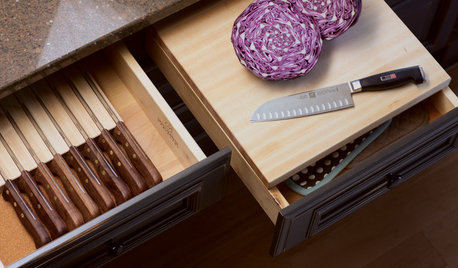Efficient Watermelon Usage
equinoxequinox
9 years ago
Related Stories

CONTEMPORARY HOMESHouzz Tour: Modern Efficiency in the English Countryside
Passive House principles make a new contemporary home for a Gloucestershire family of 5 a model of energy-efficient design
Full Story
LAUNDRY ROOMSHouzz Call: Show Us Your Wonderfully Efficient Laundry Room
Got a drying rack, a folding table or clever storage in your laundry room? We want to see it!
Full Story
GREAT HOME PROJECTSHow to Install Energy-Efficient Windows
Learn what Energy Star ratings mean, what special license your contractor should have, whether permits are required and more
Full Story
MY HOUZZMy Houzz: Goal of a Net-Zero Nest in Southern California
A Long Beach family focuses on energy efficiency in remodeling their 1957 ranch house
Full Story
GREEN BUILDINGOff the Grid: Ready to Pull the Plug on City Power?
What to consider if you want to stop relying on public utilities — or just have a more energy-efficient home
Full Story
MOST POPULARKitchen Evolution: Work Zones Replace the Triangle
Want maximum efficiency in your kitchen? Consider forgoing the old-fashioned triangle in favor of task-specific zones
Full Story
KITCHEN STORAGEKnife Shopping and Storage: Advice From a Kitchen Pro
Get your kitchen holiday ready by choosing the right knives and storing them safely and efficiently
Full Story
KITCHEN DESIGNBreaking Out of the Kitchen Work Triangle
Keep the efficiency but lose the rigidity with kitchen designs that don't box you in
Full Story
GREAT HOME PROJECTSHow to Add a Skylight or Light Tube
New project for a new year: Increase daylight and maybe even your home’s energy efficiency by opening a room to the sky
Full Story
GREEN BUILDINGHouzz Tour: See a Maine House With a $240 Annual Energy Bill
Airtight and powered by the sun, this energy-efficient home in a cold-winter climate is an architectural feat
Full StorySponsored
Custom Craftsmanship & Construction Solutions in Franklin County
More Discussions






QuinnaBrennan
Jasdip
Related Professionals
Accokeek Landscape Architects & Landscape Designers · River Forest Landscape Architects & Landscape Designers · Springfield Landscape Contractors · Laguna Hills Landscape Contractors · Secaucus Landscape Contractors · Wallingford Landscape Contractors · Westford Landscape Contractors · Chicago Ridge Landscape Contractors · Clearfield Landscape Contractors · Ames General Contractors · Clarksville General Contractors · Deer Park General Contractors · Genesee General Contractors · Marinette General Contractors · Medford General Contractorshummersteve
Jasdip
QuinnaBrennan
Jasdip
sbryce_gw